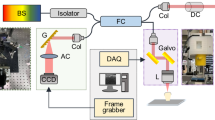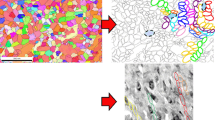Abstract.
The development of dentin and of enamel share a common starting locus: the dentinoenamel junction (DEJ). In this study the relationship between enamel and dentin crystals has been investigated in order to highlight the guiding or modulating role of the previously mineralized dentin layer during enamel formation. Observations were made with a high-resolution electron microscope and, after digitalization, image-analysis software was used to obtain digital diffractograms of individual crystals. In general no direct epitaxial growth of enamel crystals onto dentin crystals could be demonstrated. The absence of direct contact between the two kinds of crystals and the presence of amorphous areas within enamel particles at the junction with dentin crystals were always noted. Only in a few cases was the relationship between enamel and dentin crystals observed, which suggested a preorganization of the enamel matrix influenced by the dentin surface structure. This could be explained either by the existence of a proteinaceous continuum between enamel and dentin or by the orientation of enamel proteins by dentin crystals.
Similar content being viewed by others
Author information
Authors and Affiliations
Additional information
Electronic Publication
Rights and permissions
About this article
Cite this article
Bodier-Houllé, P., Steuer, P., Meyer, J. et al. High-resolution electron-microscopic study of the relationship between human enamel and dentin crystals at the dentinoenamel junction. Cell Tissue Res 301, 389–395 (2000). https://doi.org/10.1007/s004410000241
Received:
Accepted:
Issue Date:
DOI: https://doi.org/10.1007/s004410000241




